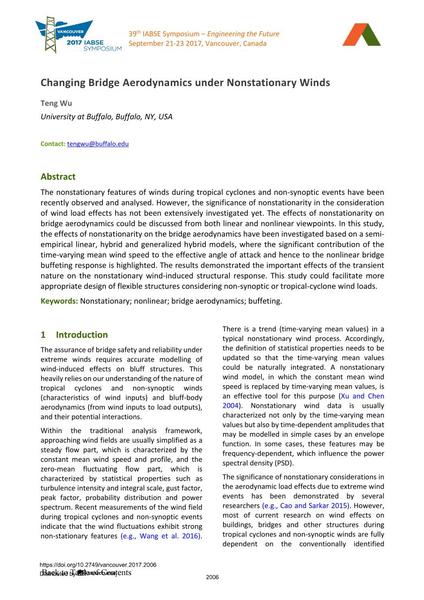Changing Bridge Aerodynamics under Nonstationary Winds

|
|
|||||||||||
Détails bibliographiques
| Auteur(s): |
Teng Wu
(University at Buffalo, Buffalo, NY, USA)
|
||||
|---|---|---|---|---|---|
| Médium: | papier de conférence | ||||
| Langue(s): | anglais | ||||
| Conférence: | IABSE Symposium: Engineering the Future, Vancouver, Canada, 21-23 September 2017 | ||||
| Publié dans: | IABSE Symposium Vancouver 2017 | ||||
|
|||||
| Page(s): | 2006-2013 | ||||
| Nombre total de pages (du PDF): | 8 | ||||
| Année: | 2017 | ||||
| DOI: | 10.2749/vancouver.2017.2006 | ||||
| Abstrait: |
The nonstationary features of winds during tropical cyclones and non-synoptic events have been recently observed and analysed. However, the significance of nonstationarity in the consideration of wind load effects has not been extensively investigated yet. The effects of nonstationarity on bridge aerodynamics could be discussed from both linear and nonlinear viewpoints. In this study, the effects of nonstationarity on the bridge aerodynamics have been investigated based on a semi- empirical linear, hybrid and generalized hybrid models, where the significant contribution of the time-varying mean wind speed to the effective angle of attack and hence to the nonlinear bridge buffeting response is highlighted. The results demonstrated the important effects of the transient nature on the nonstationary wind-induced structural response. This study could facilitate more appropriate design of flexible structures considering non-synoptic or tropical-cyclone wind loads. |
||||
